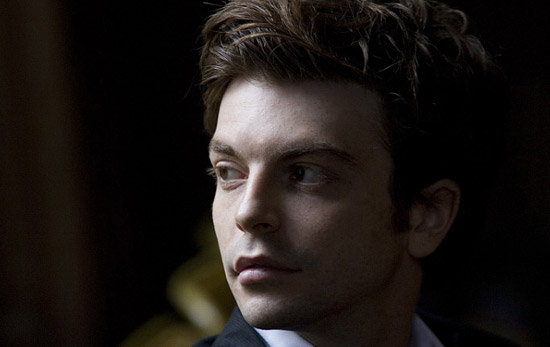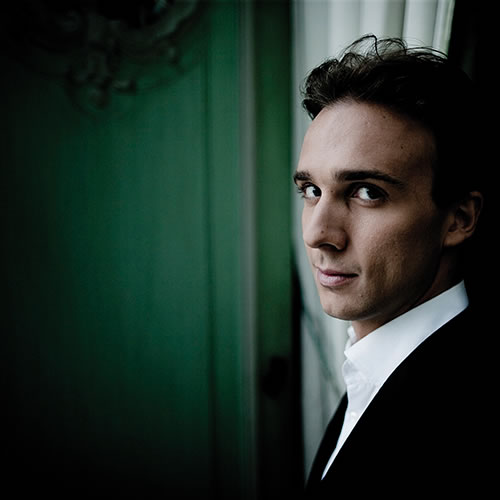Back at the Barbican for a new season after a Far Eastern tour, the BBC Symphony Orchestra returned to pull off a characteristic stunt, a generous four-work programme featuring at least one piece surely no-one in the audience woud have heard live before. This time, the first quarter belonged exclusively to the unaccompanied BBC Singers in one of the most demanding sets of the choral repertoire. After which the seemingly humble but dogged and vivacious Marc Minkowski helped create orchestral magic of three very different kinds, defining French composers’ infinite capacity for play.
Serious intent was there at all times, but determinedly so in Figure Humaine, Poulenc’s Second World War settings of lyrics by Paul Éluard posted to him by the poet's Resistance colleagues (and given a March 1945 London premiere by the BBC Singers' predecessors). The anger and the pity of the Second World War are here through a many-voiced filter of quiet and ironic numbers, building in "La menace sous le ciel rouge" to fever pitch and then a rocking aftermath, spiritual sequel to the end of Stravinsky’s Symphony of Psalms.
 Yet that’s not all: Éluard and Poulenc have a final trail to blaze in the epilogue-like hymn to ‘Liberté’, the word not uttered until the last ecstatic quatrain with a soprano hitting a top E (the one just below the Queen of the Night's F in alt). Accomplished though an augmented BBC Singers undoubtedly were, a few stray vibratos sometimes defused the focus and made one fear for the pitch in tricky sequences, though it did in fact hold. I fell in love with Figure humaine on the choral group Tenebrae’s stunning recording, and this was just a notch below.
Yet that’s not all: Éluard and Poulenc have a final trail to blaze in the epilogue-like hymn to ‘Liberté’, the word not uttered until the last ecstatic quatrain with a soprano hitting a top E (the one just below the Queen of the Night's F in alt). Accomplished though an augmented BBC Singers undoubtedly were, a few stray vibratos sometimes defused the focus and made one fear for the pitch in tricky sequences, though it did in fact hold. I fell in love with Figure humaine on the choral group Tenebrae’s stunning recording, and this was just a notch below.
Poulenc’s Concerto for Two Pianos, on the other hand, was blessed with a performance fit for laughing gods and weeping mortals. Minkowski had the solution to any orchestral thickness which should have been adopted last Wednesday by Nézet-Séguin, where the soloist in the Piano Concerto, Alexandre Tharaud, was often swamped – that’s to say, to set the orchestra back and give the spotlight to the two pianists. Though apparently no established duo in this piece like the Labèque Sisters who used to make it so delightfully ubiquitous, David Kadouch (pictured above) and Guillaume Vincent (below) offered the necessary mix of different temperaments with complementary musicianship - young musicians both very much on the way up. Kadouch would provide more introspective rejoinders to Vincent’s obvious playfulness – heartbreakingly so in the pathos which turns the Mozart pastiche of the slow movement into something meaningful.
 Both pianists made you realize what trailblazing genius Poulenc showed in his scintillating punctuations of music-hall turns and cinematic heart with Balinese gamelan music. The orchestra was in top, razor-sharp form, too, and first cellist Graham Bradshaw’s solo on harmonics capped the many miracles. But there were more to come in what had been advertised as Ravel’s Ma mère l’oye (Mother Goose) Suite but turned out to be the complete ballet – praise be, for its extra music continues the line of metaphysical subtlety in orchestration and melody. Here the BBC woodwind proved themselves, as ever, the equal of the world’s best. Flautist Daniel Pailthorpe, oboist Richard Simpson and clarinettist Richard Hosford filled Minkowski’s slow tempi for the sadder fairy-tale episodes with meaning; there were mysteries, too, from harpist Louise Martin and leader Stephen Bryant.
Both pianists made you realize what trailblazing genius Poulenc showed in his scintillating punctuations of music-hall turns and cinematic heart with Balinese gamelan music. The orchestra was in top, razor-sharp form, too, and first cellist Graham Bradshaw’s solo on harmonics capped the many miracles. But there were more to come in what had been advertised as Ravel’s Ma mère l’oye (Mother Goose) Suite but turned out to be the complete ballet – praise be, for its extra music continues the line of metaphysical subtlety in orchestration and melody. Here the BBC woodwind proved themselves, as ever, the equal of the world’s best. Flautist Daniel Pailthorpe, oboist Richard Simpson and clarinettist Richard Hosford filled Minkowski’s slow tempi for the sadder fairy-tale episodes with meaning; there were mysteries, too, from harpist Louise Martin and leader Stephen Bryant.
It was hard after this to adjust at first to the raucous world of late developer Albert Roussel, who, turned 60 in 1930, turned out a stamping, berserk compendium of the late romantic style in which he grew up and fashionable age-of-steel mechanics in his Third Symphony. Minkowski gave a wink at the dance-fun to come in the middle of the unstoppable first movement while those woodwind luridly kicked off a surprise in the middle of the Adagio’s wallow – a crazy fugue which brings the romanticism out in boils. With the scherzo and finale, though, it was all fairground craziness, Chabrier on acid, a delirious way to be thrown off the evening’s rainbow-painted carousel.
- Listen to this concert for the next six days on the BBC Radio 3 iPlayer
- Read about an outstanding 2009 Proms performance of Ravel's complete Mother Goose ballet on David Nice's blog














Add comment